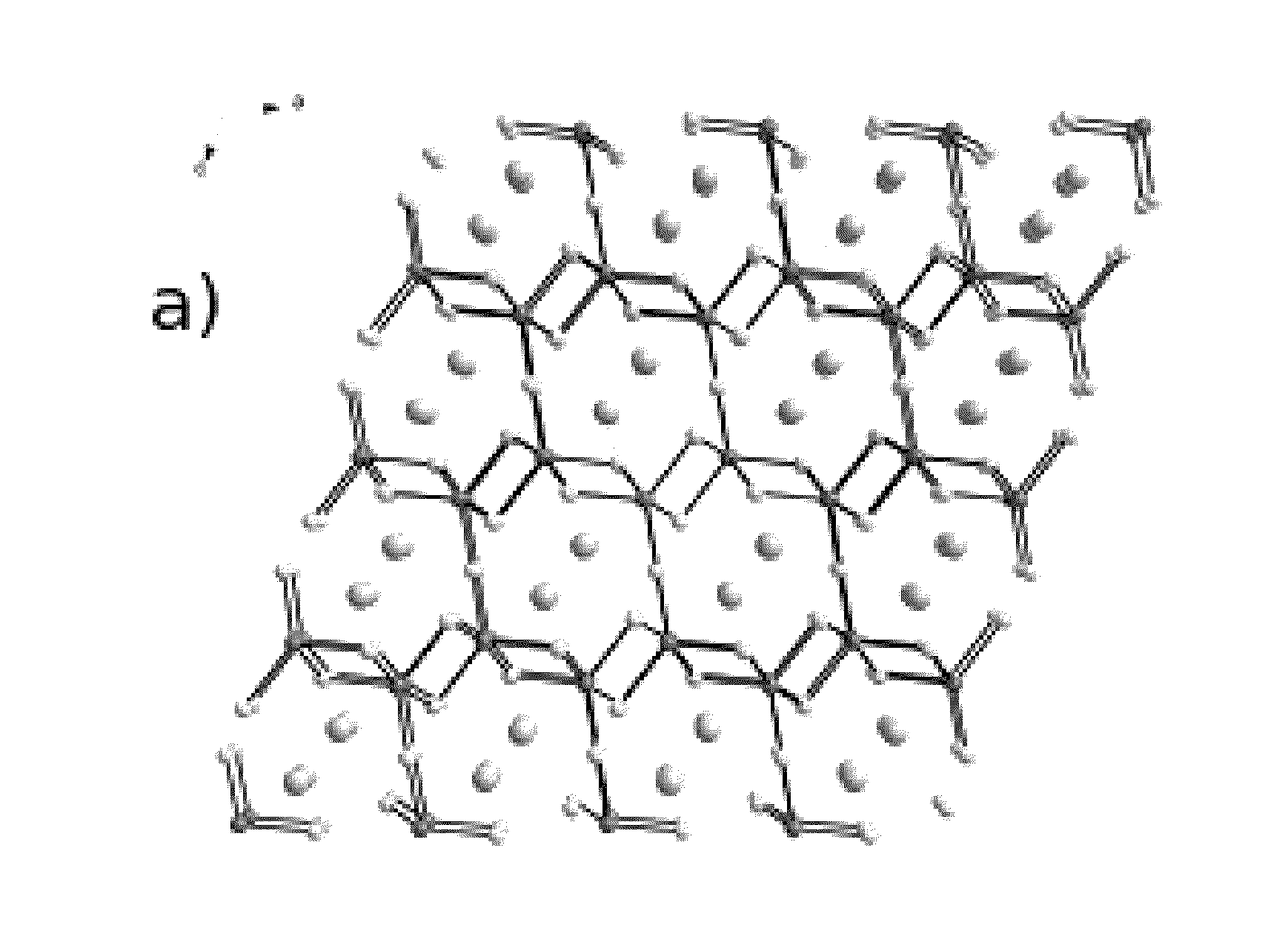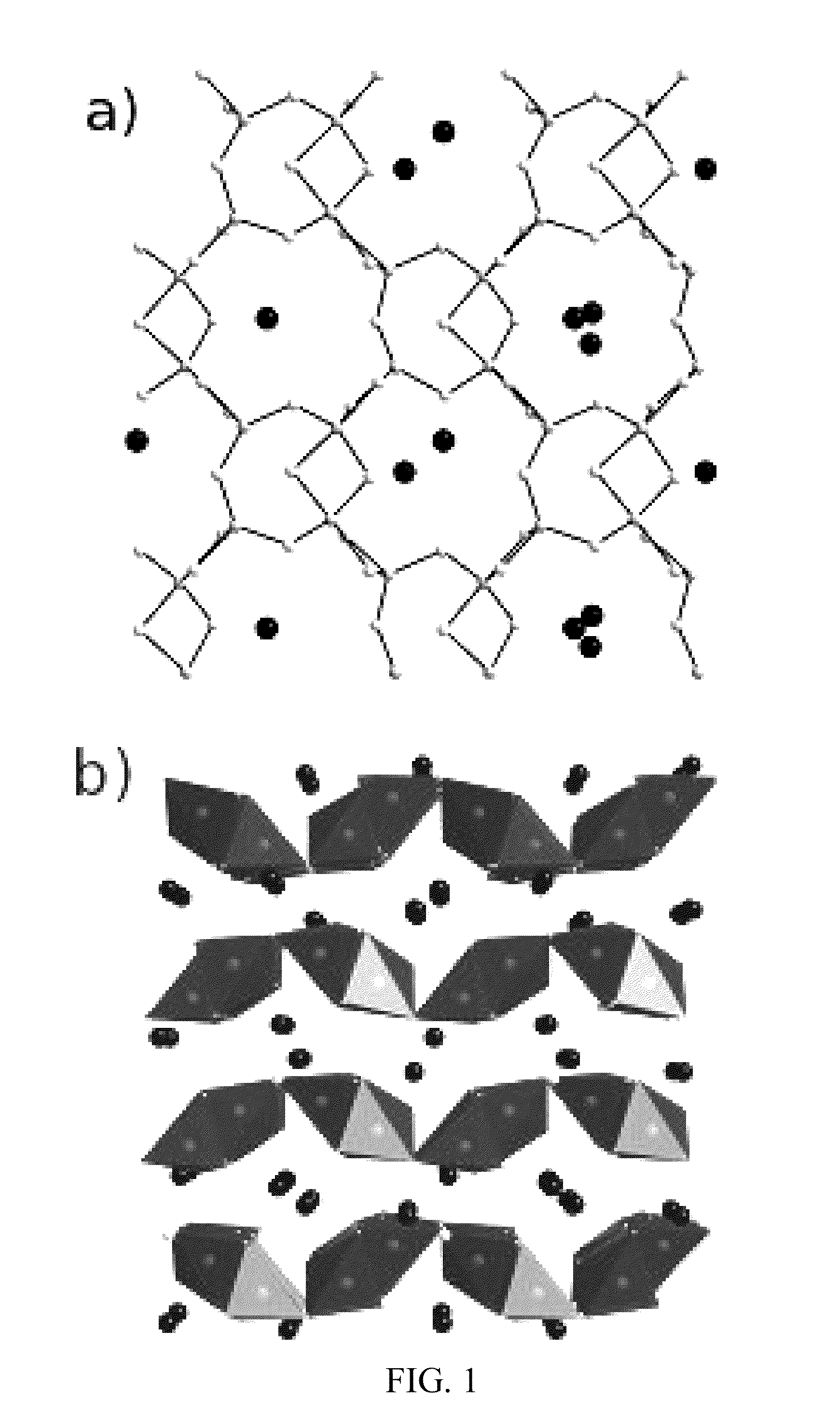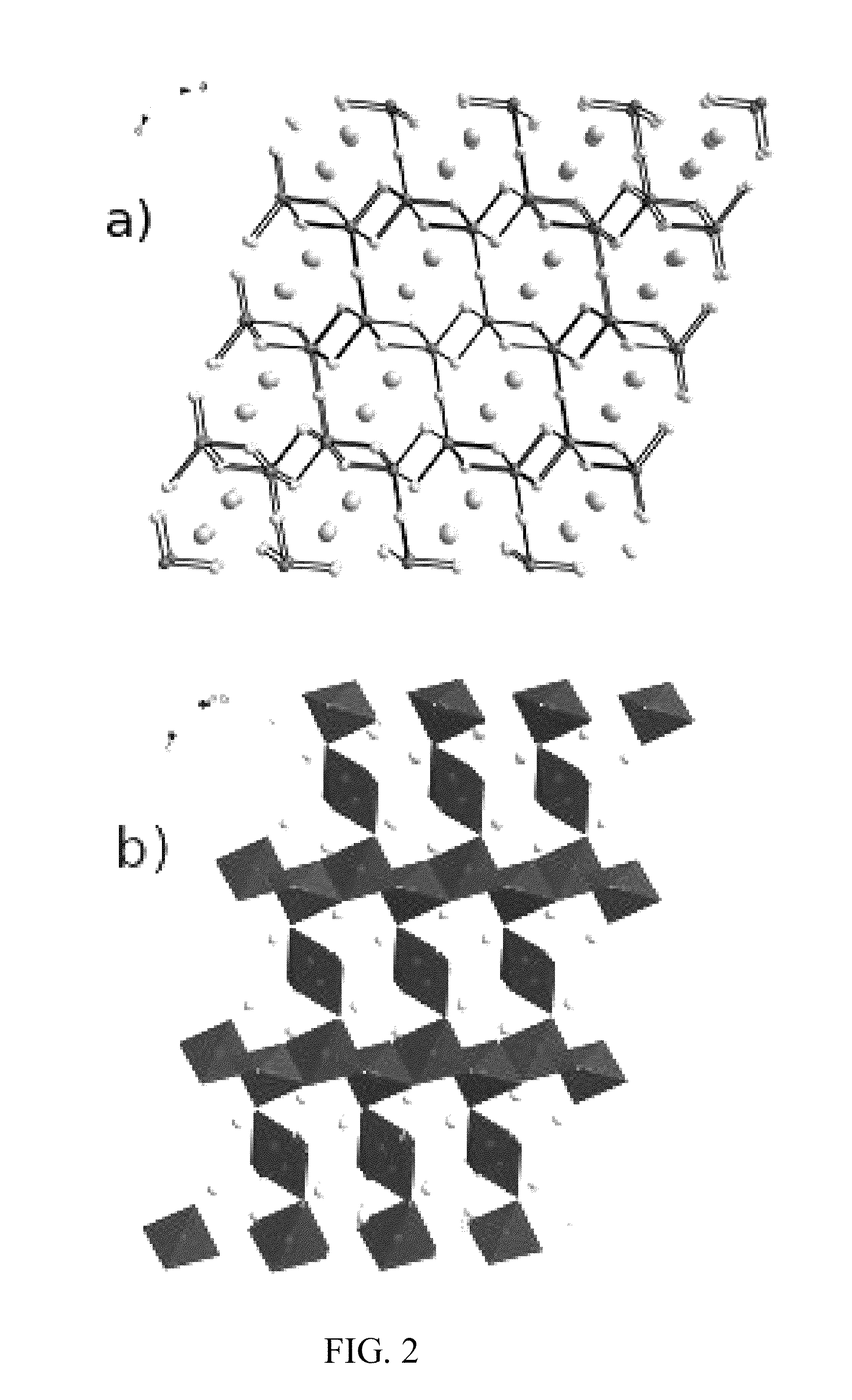Chalcogenide compounds for the remediation of nuclear and heavy metal wastes
a technology of heavy metal waste and compounds, which is applied in the direction of separation processes, radioactive contaminants, cation exchanger materials, etc., can solve the problems of affecting the use of nuclear power, requiring high cost, and requiring high cost, and achieving cost, stability and selectivity
- Summary
- Abstract
- Description
- Claims
- Application Information
AI Technical Summary
Benefits of technology
Problems solved by technology
Method used
Image
Examples
example 1
Remediation of Cs+ by K2Sn4S9
Materials and Methods.
The chalcogenides were made by combining the potassium, tin and sulfur (or K2 and SnS2) in stoichiometric amounts and melting the resulting mixture at 500 to 700° C. Methods for making K2Sn4S9 are described in greater detail in Marking et al., J. Solid State Chem. 1998, 141, 17-28, the entire disclosure of which is incorporated herein by reference.
Powder patterns were obtained using a CPS 120 INEL X-ray powder diffractometer with Ni-filtered Cu Kα radiation operating at 40 kV and 20 mA and equipped with a position-sensitive detector. Samples were ground and spread on a glass slide.
The ion-exchange experiments were carried out with the batch method. A total of 10 mg of KTS-1 was weighted into a 20 ml glass vial. A 390 ppm solution of Cs+ was made by weighing out 49.78 mg of CsCl and diluting it into a 100 mL volumetric flask with deionized water; 10 mL of this was added to the glass vial. For subsequent reactions, the initial Cs+ co...
example 2
Remediation of Hg2+, Cd2+, Pb2+, Cs+ and Sr2+ by K2Sn4S9 and K2Sn2S5
Materials and Methods.
Methods for making K2Sn4S9 are described in detail in Marking et al., J. Solid State Chem. 1998, 141, 17-28, the entire disclosure of which is incorporated herein by reference. Methods of making K2Sn2S5 are described in detail in Liao et al., Inorg. Chem. 1993, 32, 2453-2462, the entire disclosure of which is incorporated by reference.
The ion-exchange experiments were carried out with the batch method. A total of 10 mg of KTS (1 or 2) was weighted into a 20 ml glass vial. Solutions of 2.5-3 molar equivalents (when compared to KTS-1 or KTS-2) of HgCl2, PbCl2, SrCl2, CdCl2, and CsCl were made. 20 mg of the KTS-1 or KTS-2 samples were weighed out into a 20 mL vial. 10 mL of the aforementioned solutions were added to the vial along with a magnetic stir bar. The reactions were stirred overnight between 10-15 hours. The stir bars were then removed, and the vials were centrifuged (3980 rpm for 20 min...
example 3
Remediation of Elemental Hg from Hydrocarbon Liquid Using K2Sn4S14
Materials and Methods.
Preparation of K2Sn4S14: An amount of 1.10 g of K2S, 4.72 g of Sn and 4.1 g of S were mixed in a fused silica tube and the tube was evacuated to 10−3 Torr. The tube was heated to 700-800° C. using a programmable furnace to produce a liquid. The molten liquid was then pulled out of the furnace and cooled in air. The resulting material K2Sn4S14 may be crystalline or amorphous or a combination of the two forms. K2Sn4S15, K2Sn4S18, K2Sn4S20, and the like, can be prepared similarly by adding additional amounts of sulfur in the reaction.
The Hg capture experiments were carried out with the batch method. A total of 10 mg of K2Sn4S16 was weighted into a 20 ml glass vial. A solution of Hg in hexane was made at a concentration of 1220 ppb Hg metal. A volume of 50 ml hexane was used in each experiment. An amount of 45 mg of K2Sn4S16 sample was added to the vial containing the Hg hexane solution. The reactio...
PUM
| Property | Measurement | Unit |
|---|---|---|
| alkaline earth | aaaaa | aaaaa |
| weight | aaaaa | aaaaa |
| Ion exchange selectivity | aaaaa | aaaaa |
Abstract
Description
Claims
Application Information
 Login to View More
Login to View More - R&D
- Intellectual Property
- Life Sciences
- Materials
- Tech Scout
- Unparalleled Data Quality
- Higher Quality Content
- 60% Fewer Hallucinations
Browse by: Latest US Patents, China's latest patents, Technical Efficacy Thesaurus, Application Domain, Technology Topic, Popular Technical Reports.
© 2025 PatSnap. All rights reserved.Legal|Privacy policy|Modern Slavery Act Transparency Statement|Sitemap|About US| Contact US: help@patsnap.com



